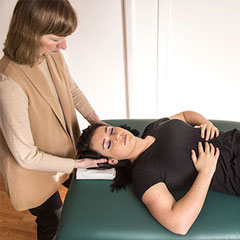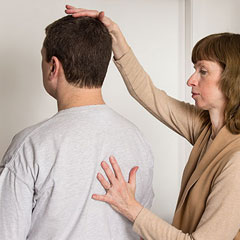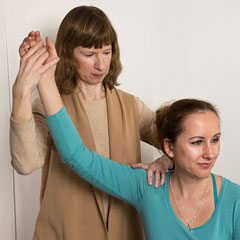Balance & Poise
Increased Mobility
Improved Performance
Comfort & Support
Pain Reduction
Ease of Movement
Improving your quality of life through better posture and movement.

The Alexander Technique
The Alexander Technique is a unique educational process that helps you recognize and change physical habits that cause unnecessary tension, strain and pain. It increases mobility and restores your body's natural ease and poise. It improves your overall health and sense of well-being, because when you move better, you function better and feel better. It teaches simple principles of posture and movement that can be applied to everything you do, and its effectiveness has been substantiated by scientific research.
Life is movement. Learn to move well.
— READ MORE —
Discovering...
the Alexander Technique
This video gives you an inside view of the Alexander Technique in action. It also describes a major clinical trial that studied the effects of the Alexander Technique on chronic back pain. Results were published
in the British Medical Journal.
LEARN MORE ABOUT THE STUDY . . .
About the Lessons:
Alexander lessons are gentle and powerful, simple and challenging, safe and adventurous, serious and fun – all at the same time!
You will gain more freedom and better control of your body.
You will get a better understanding of how your body works best.
You will learn valuable self-care skills that will be
with you for the rest of your life.
— READ MORE —



My Journal
A collection of articles, by Laurie, to better educate and inform.
Get Ready to Garden!
by: Laurie Currie | date: 02.27.2016
This may sound silly, but I'm glad Punxsutawney Phil has predicted an early spring this year. I am so looking forward to . . .
Quilting With Ease
by: Laurie Currie | date: 02.26.2016
Human beings are designed to move easily, freely and comfortably, and we have a built-in capacity for balance and poise in our . . .
Watching and Wondering
by: Laurie Currie | date: 02.25.2016
Have you ever watched something happening and wondered about it? Of course you have. Maybe you wondered how it . . .

My Story
I started dancing at an early age, and I have explored many different forms of dance and movement over the years. I encountered the Alexander Technique briefly in 1987 by way of modern dance (Ohio State University Dance Department) and personal curiosity. From there I moved to New York to pursue a dance career and began taking private Alexander lessons shortly afterward. READ MORE . . .
